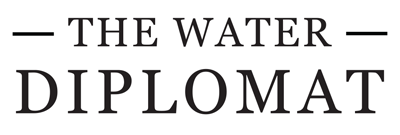Decentralised sanitation system can reduce pollution in Nairobi says UN-Habitat official
By Francis Mureithi, first published in Nation 07/03/2023
10 Mar 2023 by The Water Diplomat

Effective management of sanitation and wastewater will lessen the pollution load on local water resources in Nairobi and other urban areas of Kenya.
The growing challenge in dense urban settlements, the rapidly increasing urbanisation rate of 4.5 per cent per annum and rising settlement densities in low-income urban and peri-urban areas are piling pressure on the urgent need for sanitation technologies and management systems that are robust and affordable.
“A lot of effort has been put into water delivery with very limited investment in sanitation and wastewater which is affecting the quality of water,” said Mr Pireh Otieno, an expert in governance and leader of the water and sanitation team at the UN Habitat headquarters in Nairobi.
Mr Otieno said in many developing countries, centralised sewerage and wastewater treatment systems cover only a portion of larger urban areas, and are often not yet planned for smaller towns and densely populated, low-income areas of cities.
The official was speaking recently on the key topic titled “Public policies for access to water in Africa” during a workshop on water issues in Africa for East African journalists in Nairobi.
“On-site sanitation is often inappropriate in the denser settlements and slum areas, thus requiring intermediate and complementary solutions. Decentralised wastewater treatment systems (DEWATS) connected to simplified sewer systems or communal sanitation centres have the potential to close the gap between on-site and centralised systems,” he said.
Sanitation improvements
He added: “Community-managed DEWATS offer the possibility of swift sanitation improvements in high-priority neighbourhoods that communities can manage themselves, where local government does not yet provide a full sanitation service.”
“Water and sanitation not only drastically improve the quality of lives; it can save lives. Africa's cities are growing at an unprecedented rate. In Kenya alone, the urban population will more than triple to 40 million by 2050. This rapid urbanisation has huge implications for water use and wastewater management, which already face rising water and sanitation demands and problems, such as pollution and overexploitation,” said the official.
“African governments should think of ways to manage wastewater. There is very little data on how to track the impact of wastewater on the environment. African people are concerned about access not thinking about how you manage waste. The management of waste water is not about developing more sewers. Sewers are the most expensive,” he added.
The latest water and sanitation for the urban poor report in Kenya indicates that access to improved sanitation facilities remains low at 31 per cent in urban areas, with access to safely managed sanitation estimated at 26 per cent while sewer coverage is estimated at 16 per cent with 84 per cent of the Kenyans depending on onsite sanitation.
The current population of Kenya is 57 million as of the end of February 28, 2023, based on Worldometer elaboration of the latest United Nations data.
The World Health Organisation (WHO) and the United Nations Children's Fund (UNICEF) joint Monitoring Program (JMP) estimates that only 31 per cent of urban residents in Kenya have access to improved facilities.
Low sewer coverage
According to the Water Services Regulatory Board (WASREB), the low sewer coverage is putting over half of the population at heightened risk of diseases and death due to poor access to safe water, sanitation and hygiene, which is responsible for over 75 per cent of Kenya’s total disease burden.
The poor sanitation is piling pressure on the government to increase the proportion of the population using safely managed sanitation services and meet the Sustainable Development Goal (SDG) 6.2 on sanitation and Kenya Vision 2030 sanitation targets.
WASREB estimates that about Sh433 billion would be required to fund urban sanitation programmes due to rapid urbanisation which is double the global average.
According to the National Water Master Plan 2030, to increase the conventional sewerage coverage to at least 80 per cent by 2030, 96 per cent of the required resources of Sh663 billion will be needed for new urban sewerage infrastructure development, with the remaining four per cent required for rehabilitation of existing dilapidated systems.
To realise these ambitious investment targets, the National Water Master Plan 2030 estimates an annual investment of Sh127 billion is required.
